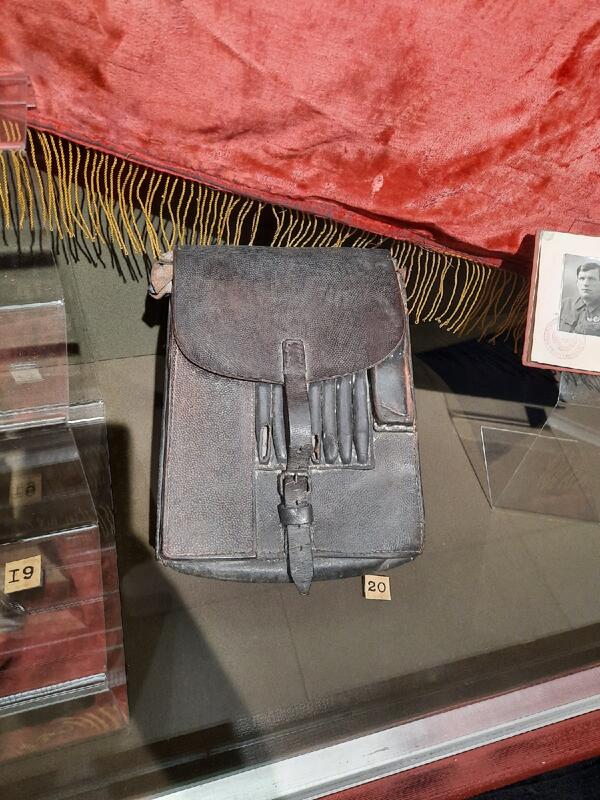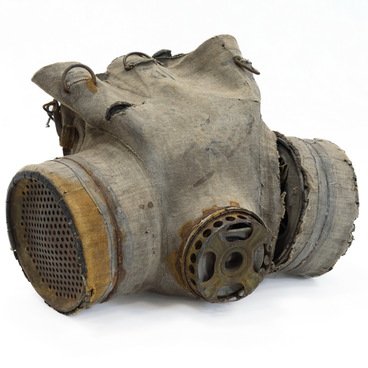The field bag was an integral part of the equipment of the commanding staff (officers, warrant officers, sergeants) ever since it was introduced. It was necessary for carrying, storing and using work documents, maps, and writing utensils.
The sabretache is sometimes considered the forerunner of the officer’s field bag. It was a leather bag of cavalry soldiers in the 17th–19th centuries, which was an important part of the equipment of the hussars. During the Russo-Japanese War, the Russian Imperial Army already used the field bag with an image of a double-headed eagle. The field bag was introduced by Order No. 1936 of the Revolutionary Military Council of the USSR from September 1, 1923 and adopted by the Red Army as part of the equipment of the commanding staff. Since January 1932, a field bag with a hard tablet inside was provided to the commanding officers of the Red Army. Field bags were made at leather manufacturing factories. They were stored in warehouses and issued as needed.
During the Great Patriotic War, the officers were equipped with a map bag to store documents and reports. In field conditions, the bag was both a safe for documents and a desk for the commander: commanders signed orders by placing the flat field bag under the document. However, the map bag made the officer a noticeable target for the enemy. The bag was a conspicuous detail, and the fascists knew how to identify commanders of the Soviet army based on the equipment they carried. It is a proven fact that an order was even issued in the German army: for the purpose of disguise, the commanding staff was to wear only soldier’s shoulder belts so as not to stand out. Ordinary soldiers did not have map bags. They were forbidden to carry maps, and they kept their documents in the breast pockets of their gymnastyorkas (military smocks).
During the Great Patriotic War, carrying a field bag when “off duty” was not allowed. A civilian with a map bag could get into trouble, since when meeting a patrol, they would have to explain how they had got it. After the Great Patriotic War, field bags were often used by children as a convenient briefcase for school. In 1973, an order of the Minister of Defense of the USSR on military uniforms was issued; in its appendix it was indicated that the field bag was to be worn attached to a special strap on the right shoulder over field and everyday summer and winter uniforms.
The sabretache is sometimes considered the forerunner of the officer’s field bag. It was a leather bag of cavalry soldiers in the 17th–19th centuries, which was an important part of the equipment of the hussars. During the Russo-Japanese War, the Russian Imperial Army already used the field bag with an image of a double-headed eagle. The field bag was introduced by Order No. 1936 of the Revolutionary Military Council of the USSR from September 1, 1923 and adopted by the Red Army as part of the equipment of the commanding staff. Since January 1932, a field bag with a hard tablet inside was provided to the commanding officers of the Red Army. Field bags were made at leather manufacturing factories. They were stored in warehouses and issued as needed.
During the Great Patriotic War, the officers were equipped with a map bag to store documents and reports. In field conditions, the bag was both a safe for documents and a desk for the commander: commanders signed orders by placing the flat field bag under the document. However, the map bag made the officer a noticeable target for the enemy. The bag was a conspicuous detail, and the fascists knew how to identify commanders of the Soviet army based on the equipment they carried. It is a proven fact that an order was even issued in the German army: for the purpose of disguise, the commanding staff was to wear only soldier’s shoulder belts so as not to stand out. Ordinary soldiers did not have map bags. They were forbidden to carry maps, and they kept their documents in the breast pockets of their gymnastyorkas (military smocks).
During the Great Patriotic War, carrying a field bag when “off duty” was not allowed. A civilian with a map bag could get into trouble, since when meeting a patrol, they would have to explain how they had got it. After the Great Patriotic War, field bags were often used by children as a convenient briefcase for school. In 1973, an order of the Minister of Defense of the USSR on military uniforms was issued; in its appendix it was indicated that the field bag was to be worn attached to a special strap on the right shoulder over field and everyday summer and winter uniforms.



